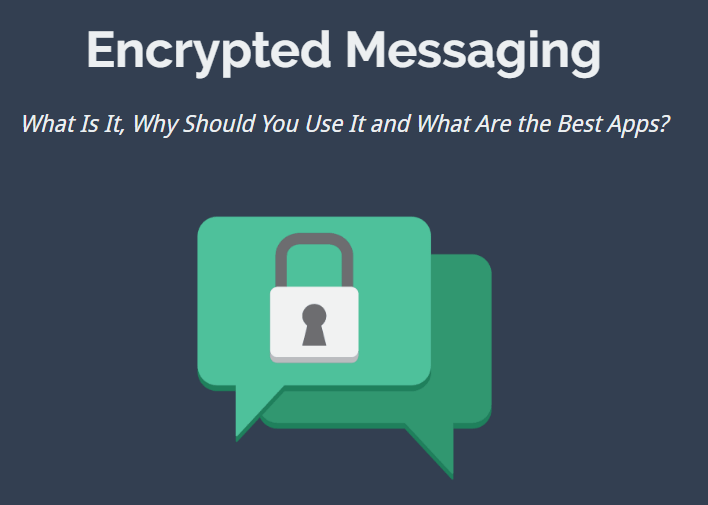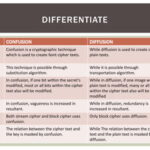Encrypting messages at home can serve as a delightful fusion of creativity and cryptography. While many may perceive encryption as a sterile and technical process confined to the realm of data security, it can also be a whimsical endeavor filled with puzzles and playful ingenuity. Herein lies an exploration of several amusing techniques to encrypt messages, transforming mundane correspondence into tantalizing enigmas destined to pique curiosity and elicit intrigue.
Firstly, let us delve into the art of substitution ciphers. This method, often associated with classic cryptology, involves replacing each letter in the plaintext with a different letter. For example, you might designate that ‘A’ becomes ‘D’, ‘B’ becomes ‘E,’ and so forth. This transformation creates a simple yet effective key that must be shared between the communicating parties. To heighten the amusement factor, one might create distinctive substitution patterns for each individual—tailoring the cipher to their unique preferences or interests.
Visualize sending a message where ‘HELLO’ metamorphoses into ‘KHOOR’, using a basic Caesar shift of three letters. Such a transformation could evoke a sense of mystery akin to the ancient messages of Roman generals, making the unsuspecting reader feel as though they have stumbled upon a modern-day codex.
Another enchanting approach is the use of pigpen cipher. This intriguing method employs a geometric system to encode letters through symbols that resemble a sort of elaborate tic-tac-toe grid. Rather than writing letters directly, you inscribe symbols that represent the letters based on their positions in the grid. Illustrating your message through whimsical characters can add layers of fun. Imagine inscribing clandestine love letters where only the recipient grasps the underlying meaning, and the rest of the world sees only abstract artwork.
For those who possess a knack for artistic expression, steganography offers yet another captivating method. This technique covertly conceals a message within an innocuous medium, such as an image or a sound file. One could craft a striking visual representation – perhaps a landscape – and subtly embed a hidden message in the pixels. To the casual observer, it appears simply as a pleasing image, but for the astute recipient, it transforms into a veritable treasure map leading to secrets only they can unveil.
Transitioning to a more tangible medium, consider employing the classic ‘secret ink’ method. Utilizing everyday items such as lemon juice or vinegar, one can write messages that are invisible to the naked eye. When heated, the hidden text emerges, revealing secrets that seem to materialize from thin air. This playful technique beckons to the spirit of exploration and experimentation, reminiscent of ancient spies who relied on similar methods to convey their messages.
Moreover, a playful twist could involve creating a message that employs a grid. By writing your message in a predetermined column-and-row format, you can enable the recipient to piece together the intended text only by recognizing the pattern. Perhaps you could send a remarkably coded pizza order or an adventure invitation, allowing the recipient to solve the puzzle with each deciphered piece.
Furthermore, you might create a riddle or a series of clues leading to the location of your actual message printed elsewhere. This concept enhances engagement by introducing a scavenger hunt element. As each riddle solves to reveal the next clue, the recipient feels increasingly absorbed in the imaginative quest. This method of interaction cultivates memorable experiences that transcend traditional messaging.
A particularly whimsical technique could involve utilizing anagrams. By taking a phrase and reshuffling its letters to create a new word or phrase, one can invoke a sense of playfulness and lateral thinking. Words can become jumbled in delightful ways – converting “I LOVE CATS” into “CATS LIVE O.” The transformation adds an element of surprise and sparks wonderment as the recipient attempts to unravel the meanings hidden within the letters.
Exploring further into the realm of coding, the use of Morse code can serve as an enjoyable diversion for those intrigued by simplicity and elegance. By composing messages in dots and dashes, you can challenge the recipient to decrypt a message gifted in this intriguing fashion. Engaging with Morse code can often feel like a nostalgic nod to the eras of telegrams and radio operators, rekindling a sense of historical appreciation while also evoking modern sentiments.
Additionally, consider using algorithmic methods, such as encoding your message through a basic programming language like Python. Simple programming scripts can randomize letters or create complex algorithms via which messages are encrypted, providing tech enthusiasts an opportunity to flex their coding prowess. This not only encapsulates the excitement of technology but also stimulates curiosity about programming and mathematical concepts.
Yet another inventive means is through the use of colors. By assigning specific colors to represent various letters or phrases, the written message turns into a vibrant mosaic of encoded information. Recipients can decode the message only by referring to a shared color-key that you supply. This method not only amplifies visual engagement but also allows the message to transform into a work of art.
In conclusion, messaging does not need to be mundane and routine. By exploring avenues such as substitution ciphers, visual codes, hidden inks, and creative clues, anyone can enliven their correspondence with a tapestry of playful encryption methods. These approaches beckon individuals to foster creativity, stimulate curiosity, and enhance interpersonal connections—all while engaging in the delightful pursuit of cryptographic artistry at home. Whether for playful banter, intriguing invitations, or simply to foster a spirit of intellectual curiosity, these methods gleefully bridge the gap between the ordinary and the extraordinary.









Leave a Comment